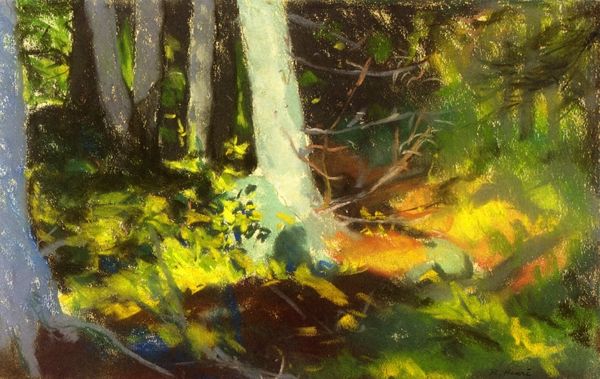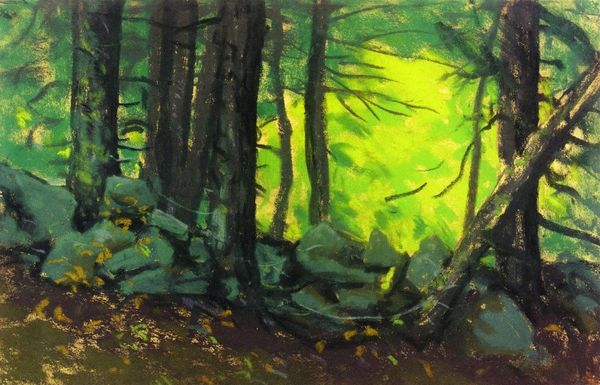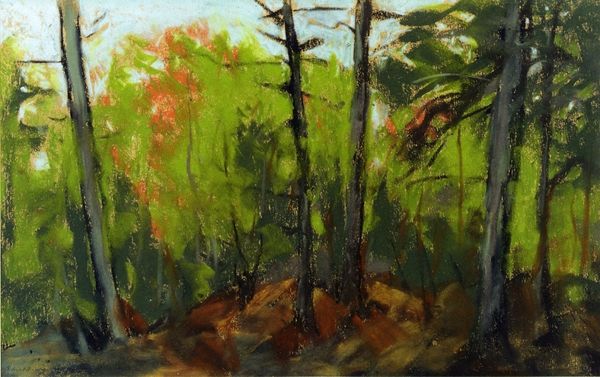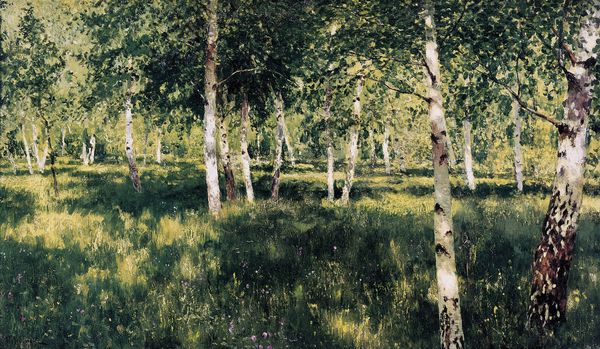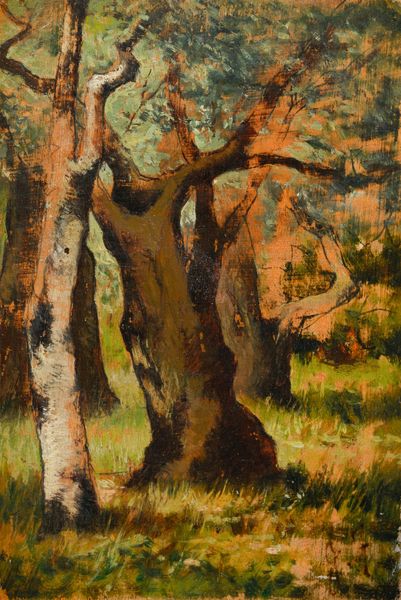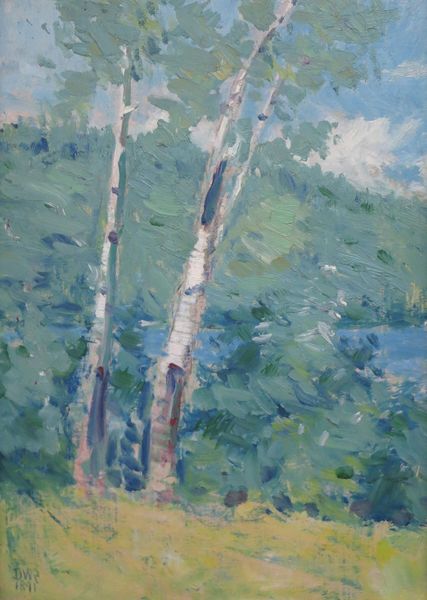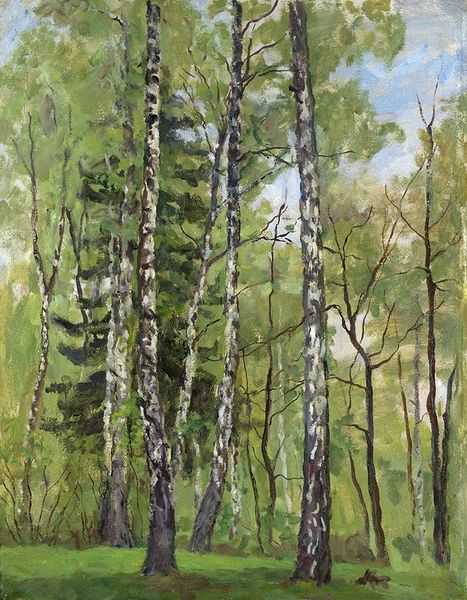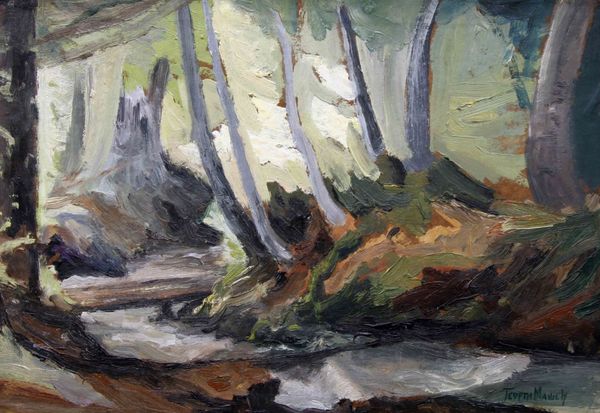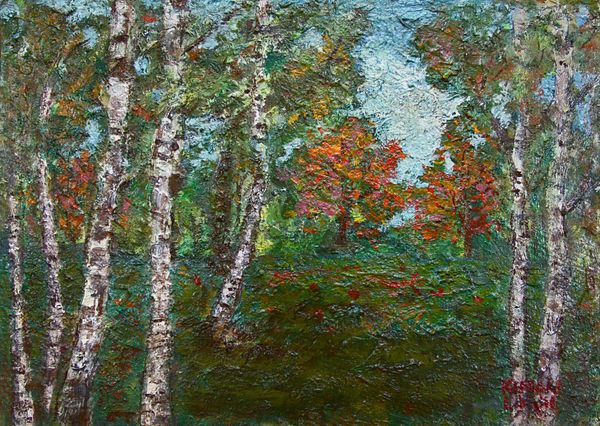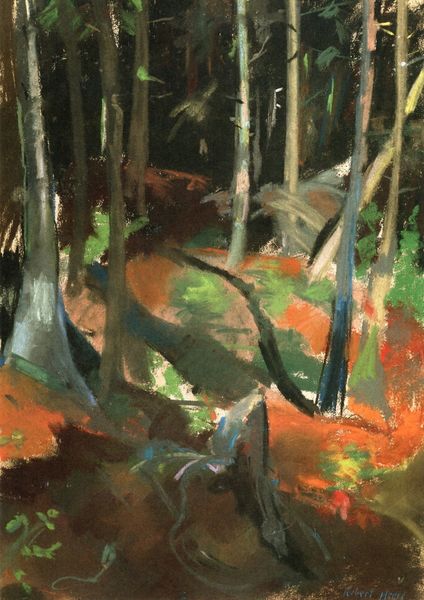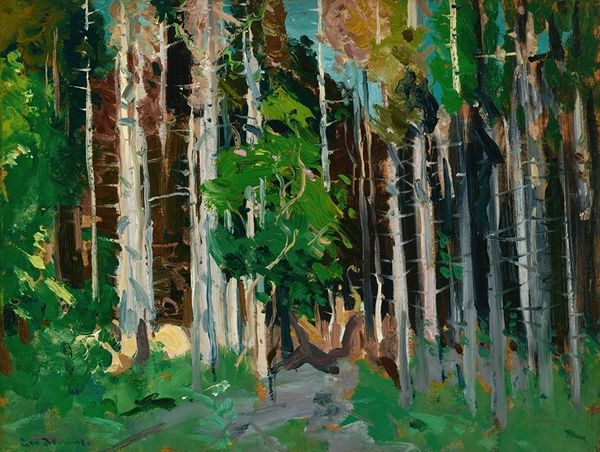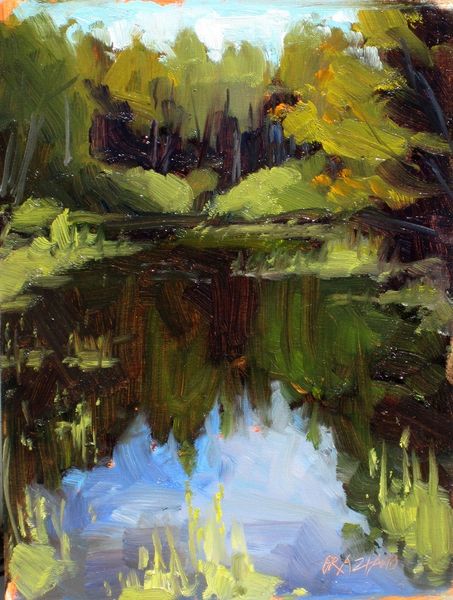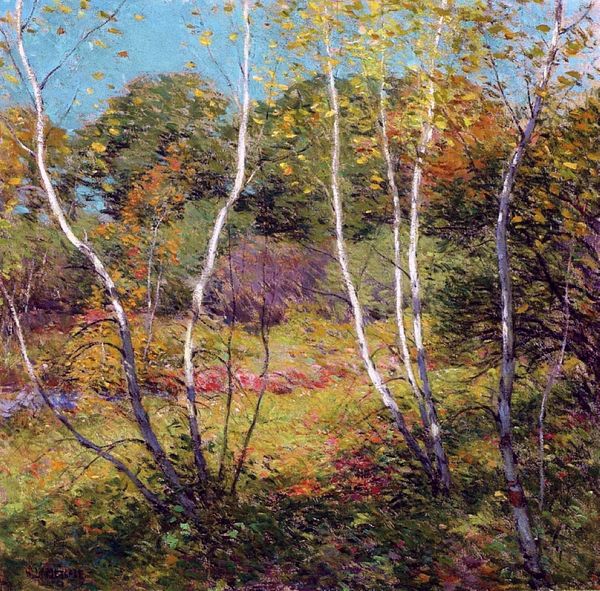
painting, oil-paint
#
narrative-art
#
painting
#
oil-paint
#
landscape
#
german-expressionism
Copyright: Public domain
Editor: This is Robert Henri’s “Where the Trees are Dying,” an oil painting from 1918. I’m immediately struck by the somber mood. The stark white trees against the dark background are really unsettling. What can you tell us about the context around this painting? Curator: Given that this work was created in 1918, right at the end of World War I, the title alone hints at a landscape deeply affected by conflict and loss. Considering Henri's place within the Ashcan School movement—artists focused on depicting urban realism and the lives of ordinary people—this shift towards a dying natural landscape suggests a broader commentary on societal decay. How do you think that shift impacted his audience at the time? Editor: That's interesting. So it’s not just about the trees, but about something larger that the trees represent, right? Do you think audiences would have understood this piece as a critique of industrialization as well? Curator: Possibly. Certainly, it can be viewed within that context, considering the growing concerns about environmental impact alongside the more immediate devastation of the war. It’s key to note that artworks become active agents in these debates. Their display in particular locations and discussions within certain publications become powerful forces themselves. Can you see the influence of any movements of the time reflected in it? Editor: I see that "German Expressionism" is listed as one. Now that you mention the Ashcan School and contextualize this with WWI, it all makes so much sense why he might depart into landscape... and one that's "dying" on top of it. Curator: Precisely. And Henri used these historical and artistic events to communicate powerful feelings through the symbolism. What at first seems like a simple, perhaps slightly disturbing, forest scene opens up to become a space of reflection on loss, destruction, and the uncertainty of the future, both natural and social. Editor: I see that, especially considering the moment in time. It provides more food for thought on Robert Henri and American art, and for understanding visual metaphor!
Comments
No comments
Be the first to comment and join the conversation on the ultimate creative platform.
